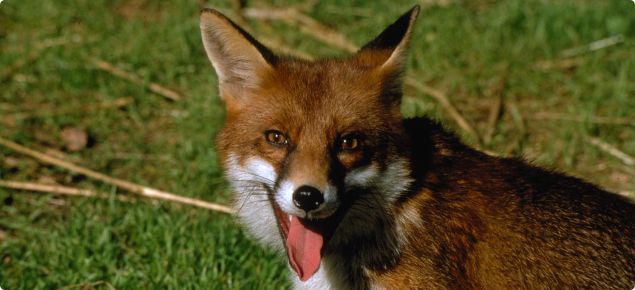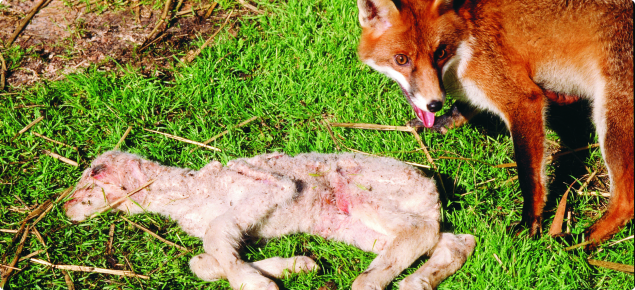Introduction
The red fox (Vulpes vulpes) is a native of the northern hemisphere where it occurs throughout most of Europe, Asia, North America and the northern coast of Africa. The red fox was first introduced from Britain into Victoria, for hunting with foxhounds, as early as 1845. Having become successfully established in Victoria by about 1870, it colonised most of mainland Australia over the next 70 years. Foxes are not found in the most northern regions of Australia, including the north-west Kimberley.
In Western Australia, the fox is a declared pest under the Biosecurity and Agriculture Management Act 2007 administered by the Department of Primary Industries and Regional Development. It is declared for the whole of the State in the management control category C3 and the prohibited keeping category. The Western Australian Organism List (WAOL) contains information on the area(s) in which this pest is declared and the control and keeping categories; use the links on this page to reach red fox in WAOL.
Characteristics
Red foxes are members of the dog family (Canidae), which includes dogs, foxes and wolves. Foxes range in colour from pale red to deep reddish brown on the upper parts. The underparts are whitish and the lower part of the legs is usually black. The tail is bushy and almost always tipped with white or black hairs. Initially, cubs have a short, dark grey fur which soon changes to a dark chocolate colour. As they grow, young foxes develop the reddish adult coat, and their rounded faces develop the pointed nose of the adult. Adults measure a little over a metre in length, including the tail, and weigh between 4.5-8.3kg; males are usually larger than females. Foxes have very acute senses of hearing and smell. They have long whiskers which give them information by touch, but their eyesight is less well developed.
Significance
Foxes cause economic losses by preying on free-range poultry, and occasionally on young lambs and kid goats. Studies of lamb deaths have shown that most lambs which die do so from natural causes such as starvation, and foxes often feed on the carcasses. However, some foxes do kill healthy young lambs and kids, and can cause serious losses in individual flocks. Foxes in urban areas have been found scavenging on waste food, stealing pet food, and killing backyard poultry.
There is strong evidence to suggest that foxes have caused the decline of many small to medium-sized species of Australian native mammals. For example, isolated populations of rock wallabies have increased when fox numbers have been reduced.
Foxes are the major carrier of rabies in Europe. Australia is free of rabies, but if it ever reached here, control of foxes would be a major problem in combating this potentially deadly disease.
Diet
Foxes tend to eat whatever is most easily available to them. Their diet includes invertebrates (for example, earthworms, centipedes, insects), fish, amphibians, reptiles, birds, small mammals, carrion, fruit and other plant material. The actual make-up of the diet in a particular area varies seasonally and depends on which foods are most available at the time. For example, where rabbits are numerous, they usually constitute the major food. Foxes have a habit of burying excess food for later use.
Reproduction and growth
Foxes breed once a year, mating in June or July. The barking calls of foxes which are often heard during early winter are probably associated with pair formation and the start of courtship. The vixen remains on heat for only three days and gestation lasts about 52 days. Cubs are born during August or September in a dry, sheltered den. They weigh from 100-130g at birth. The average litter size is four. Cubs are fed solid food from about three weeks of age. The dog fox (male parent) assists the lactating vixen by bringing in food for her and the cubs. Cubs are weaned at six to eight weeks of age.
From about four weeks of age the cubs begin to fight among themselves and establish their social ranking. Cubs emerge from the den on a regular basis at about six weeks and usually abandon the den to live on the surface by 10 weeks of age. Young foxes can hunt successfully for small mammals from about 12 weeks of age and most become independent at an age of five to six months. Foxes are capable of breeding when they are about 10 months old.
Mortality is greatest during the first year of life. Many young and inexperienced foxes fall victim to control efforts by humans.
Habits
Foxes hunt alone and for part of the year are basically solitary animals. They become more social as the breeding season approaches, forming or re-establishing pairs. The dog-vixen pair is the basic social group, though groups with additional, non-breeding vixens have been observed. In these larger groups, the vixens have a system of social ranking, with the oldest animal at the top. The younger, subordinate females help the dominant vixen (probably their mother) to raise her latest litter. Juvenile foxes begin to part from their social group at about five to six months of age, eventually dispersing from the area in which they were raised.
Each fox occupies a distinct area called a home range. Home ranges can be from 280-1600ha in size and provide all the needs of a resident fox. Home ranges of individual foxes sometimes overlap. Social groups occupy a group home range, part or all of which may be defended against other foxes; the defended area is termed a territory. The size of home ranges and territories is determined by the density of the fox population and by the availability of food and other resources.
Foxes are active mainly at night. They rest during the day in a den, often an enlarged rabbit burrow, or in sheltered sites such as rock piles, hollow logs, or thickets. A fox may use several resting sites within its home range and does not necessarily return to the same site each day.
In common with many animals, foxes use scent marks as a form of communication. Foxes mark various conspicuous objects within their home ranges with urine, scats (faeces) and secretions from the glands on either side of the anus. These marks can indicate to other foxes that the area is already occupied. Some scent marks may also identify individuals and indicate their sex and reproductive status.
Adaptability and control
Foxes have survived throughout the world despite almost constant attempts by humans to reduce numbers or to eradicate the species. Foxes thrive in many suburban areas and have even adapted to life in the centre of some large cities.
Nevertheless, it is possible in specific areas to protect livestock and native fauna from fox predation. Methods used include exclusion fencing, or the killing of foxes, mostly by baiting and shooting.


